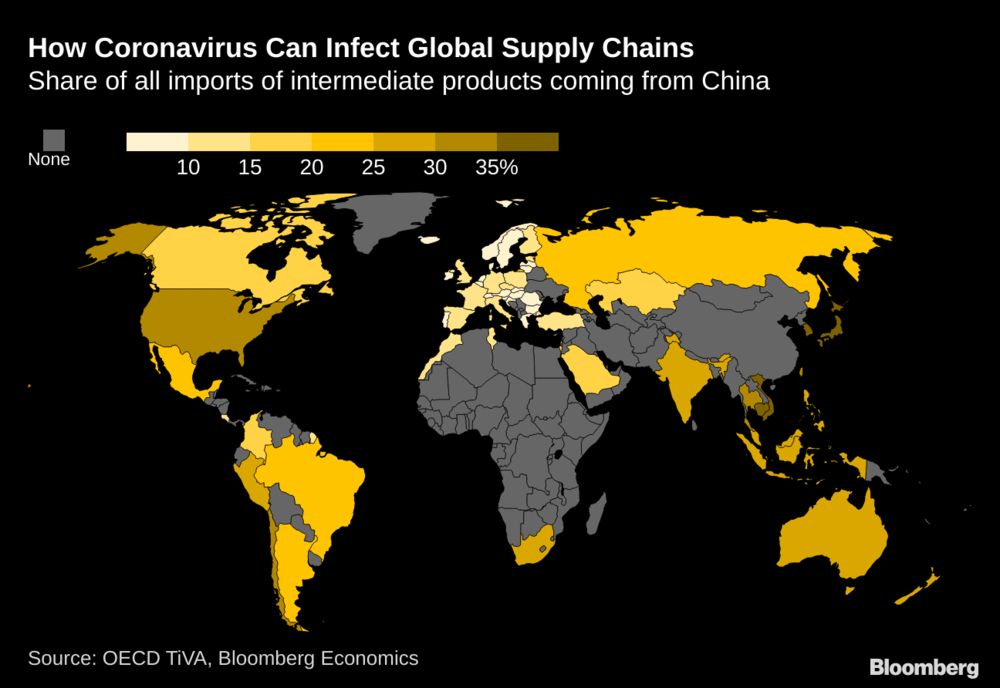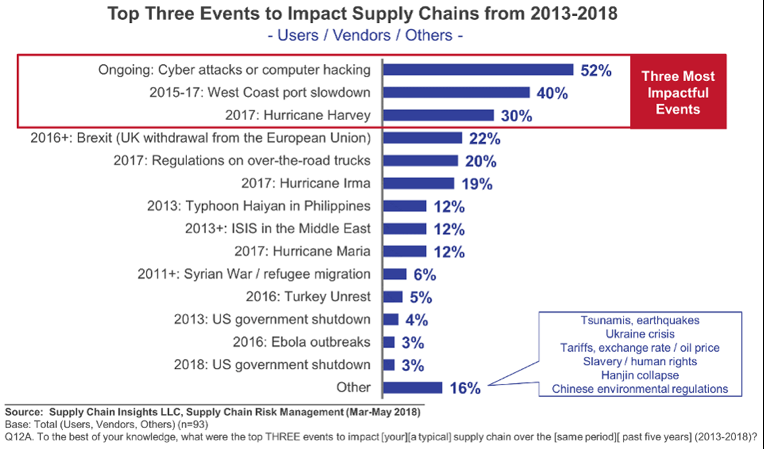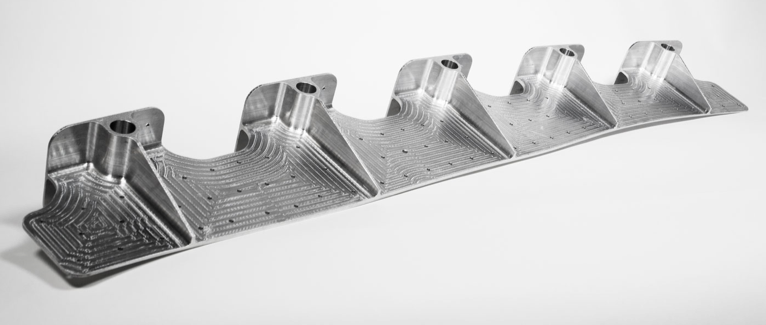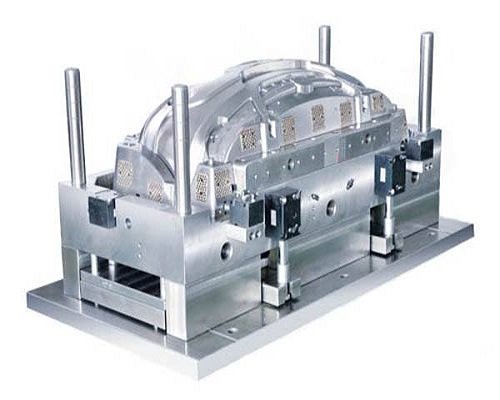Digital Alloys’ Guide to Metal Additive Manufacturing
March 30th, 2020

The Coronavirus (COVID-19) has swept rapidly across the globe stalling manufacturing operations, draining component inventories, and bottlenecking the production of many critical products. Worldwide, supply chains for almost every industry have collapsed. The issues we currently face with the production of life-saving medical equipment sadly expose how high the stakes are. Unfortunately, we are increasingly susceptible to these massive disruptions as, over the past few decades, supplier networks have steadily grown larger, more global, and more complex.
The Coronavirus pandemic has forced a lot of companies to start asking hard questions about whether expansions of multi-tiered outsourcing are sustainable, and to explore solutions to mitigate the risk of future supply chain disruptions. This post examines the vulnerabilities of global supply chains and highlights how digital manufacturing processes like additive manufacturing (AM) can improve their resiliency.
The Problem
Over the last few decades, macro-economic and societal shifts have incentivized companies to set up large, complex global supply chains to manufacture their products. The economic and societal changes include a decrease in the cost of international transportation, improved cross-border and cross-language communication and collaboration, overseas investment (often government subsidized) in manufacturing infrastructure and expertise, and rising labor costs in the US and other developed markets. These trends have rewarded companies that outsource small, high-volume product components and assembly to countries such as China. As such, the manufacture of most modern products involves the production and assembly of large numbers of components throughout multiple tiers of suppliers located all around the world. While outsourcing has improved unit economics and production scale, and allowed more capital investment into R&D, it has come with considerable operational risk.

The health of global supply networks relies on the full capacity of all the suppliers as well as the transport and logistics connecting them. This fragile chain can be broken by any single issue with or between suppliers, rendering a whole supply chain inoperable. Inventories of products and components provide a margin of safety, but inventories are shrinking due to a trend towards “just-in-time” manufacturing - where supply is precisely synchronized with demand to reduce cash outlays. With conventional manufacturing processes, just-in-time manufacturing requires the sensitive coordination of component deliveries from suppliers with assembly operations across a long, multi-tiered supply chain. When just-in-time manufacturing is coupled with larger, more complex supply chains, the fragility of the whole product manufacturing and delivery system is multiplied. What could possibly go wrong?
“…it isn’t uncommon to have four or more tiers of suppliers; this complex “fan out” means it’s extremely difficult for companies to have visibility into who all their suppliers actually are. This is one of the reasons we continue to have surprises when a major disruption occurs.”
– Willy Shih, MIT
It gets worse- As supply chains and manufacturing operations have become more vulnerable, the size and frequency of potential impact events have also increased. These include human and environmental factors like trade policies, weather and natural disasters, cyber-attacks, wars and terrorist attacks, and, of course, health pandemics like the Coronavirus. Below is a list of supply chain impact events from 2013 to 2018:

Under the shadow of the Coronavirus, companies are starting to seriously consider vulnerabilities in their supply chains and solutions to improve agility after future “black swan” events. Solutions include reducing the size and complexity of supply chains by partnering with fewer but more capable manufacturers, bringing certain manufacturing processes in house, and leveraging more inherently digital processes such as additive manufacturing (AM). Digital processes are much more adaptable because they are not constrained by long lead time tooling tied to specific suppliers and locations. Digital processes can be scaled up and down relatively quickly and easily by routing digital instructions to similar equipment in the same factory or anywhere around the world. We will examine a couple of industrial use cases to highlight current supply chain risks and consider the advantages of AM.
Aerospace Titanium Components

Titanium is increasingly used in aerospace applications due to its high strength to weight ratio. However, its attractive properties come with high raw material prices, and it is difficult and costly to manufacture. There are only a few manufacturing processes compatible with titanium; the most widely used are forging, investment casting, and machining. Due to titanium’s costs and manufacturing constraints there is a relatively small market for titanium products (compared to commodity metals like steel and aluminum), supporting a limited supply base.
According to a 2016 US Department of Commerce report on global titanium supply which highlighted the vulnerability of supply chains from the aforementioned potential impact events:
- Most aerospace titanium supply chains originate in China, Russia, Japan, and other foreign countries
- 22% of the products were identified as “sole source”, meaning there are no other capable suppliers
- On average, only 5-16 weeks of product inventory was held across all product types
- Machining and forging are two of the slowest manufacturing processes to ramp-up to full capacity, requiring 15-16 weeks on average
Conventional manufacturing processes such as forgings rely on fixed, long lead-time tooling that constrains the ability to relocate them or respond rapidly to demand changes. In sharp contrast, AM processes are highly adaptable - if a production printer (or fleet of printers) is shut down or become dislocated from their supply chains due to transportation and logistics issues, then production can quickly be redistributed to other printers around the globe. AM processes can also rapidly scale up or down by utilizing more or fewer printers. Just-in-time manufacturing, a risky way to operate using conventional processes, can be safely achieved with AM.
Machining and forging are identified in the US commerce report as titanium manufacturing processes with outsized supply chain risk, especially for parts from international, sole-source suppliers. These parts can greatly benefit from replacement or augmentation with AM. For example, Joule Printing™ has demonstrated with near-net-shape parts that it can greatly reduce the amount of machining time and cost. This alleviates machining supply chain capacity constraints and increases overall production throughput. Joule Printing™ is also capable of replacing titanium forgings which usually come from overseas suppliers and require expensive, long lead-time tooling. Joule Printers can be co-located with CNC machines providing a completely digital just-in-time manufacturing solution to make global titanium supply chains much more resilient.
Automotive Steel Tooling

Manufacturing a car involves the production and assembly of thousands of unique parts with each step requiring custom tooling such as steel molds, dies, and work-holding tools. The automotive industry spends over $70B per year on such tooling, about a quarter of this from US OEMs. Today, a growing majority of US tooling comes from Chinese suppliers where OEMs increasingly find lower costs despite the substantial time and expense of transportation (most tooling is large and heavy).
“… expect to see more fallout of Tier Two and Three [US] mold shops… China is still a major competitor… On average, winning bids from China were 35% below a North American shop’s break even.” – Laurie Harbour, HRI
Most tooling is manufactured by machining a solid steel block (billet) that must be custom ordered through a unique supply chain. For many tooling components, machining from billet wastes time, material, and cost. High-speed and cost-efficient AM processes such as Joule Printing™ have only one standard feedstock (e.g. wire) to hold in inventory. Joule Printing can manufacture a huge range of near-net-shape steel tooling from one standard wire spool. This end-to-end process is much faster than conventional machining from billet, saving material and cost too. Read more about Metal AM vs CNC Machining here. Metal AM technologies have the potential to shorten and de-risk automotive tooling supply chains. If US tool and mold shops invest in cost-effective AM equipment this would bring a lot of manufacturing back to the US and increase the agility and competitiveness of US Auto OEMs.
Conclusion
Tragedies such as the Coronavirus pandemic offer us wisdom and future opportunity. Manufacturers must act to protect themselves (and us) from future supply chain disruptions. The decades long trend of supplier networks growing larger, more global, and more complex does not need to be completely reversed. Utilizing AM and other digital supply chain technologies does not require dismantling the foundations of our existing supply chains and the huge regional investments that have been made to infrastructure and expertise. We can easily augment, adding redundancy and adaptability with high-quality, cost-effective, and scalable AM processes like Joule Printing™.
Large investments in future “what if” scenarios require complicated business justification but as “what if” becomes “when next” the decision is much simpler. As we also reflect upon the supply chain vulnerabilities of the trend to just-in-time manufacturing using conventional processes, we must include “just-in-case” investment in localized production using advanced digital technologies.
—-
If you found this post useful, please fill out the form below to join our mailing list and receive updates on future posts in our Guide to Metal Additive Manufacturing.
Please check out other posts in our blog series:
Digital Alloys’ Guide to Metal Additive Manufacturing
Learn about the technology behind our process:

Alex Huckstepp
VP Business Development

Digital Alloys is committed to providing the technology and expertise manufacturers need to use metal additive manufacturing in production — enabling them to save time, shrink costs, and produce valuable new product.
